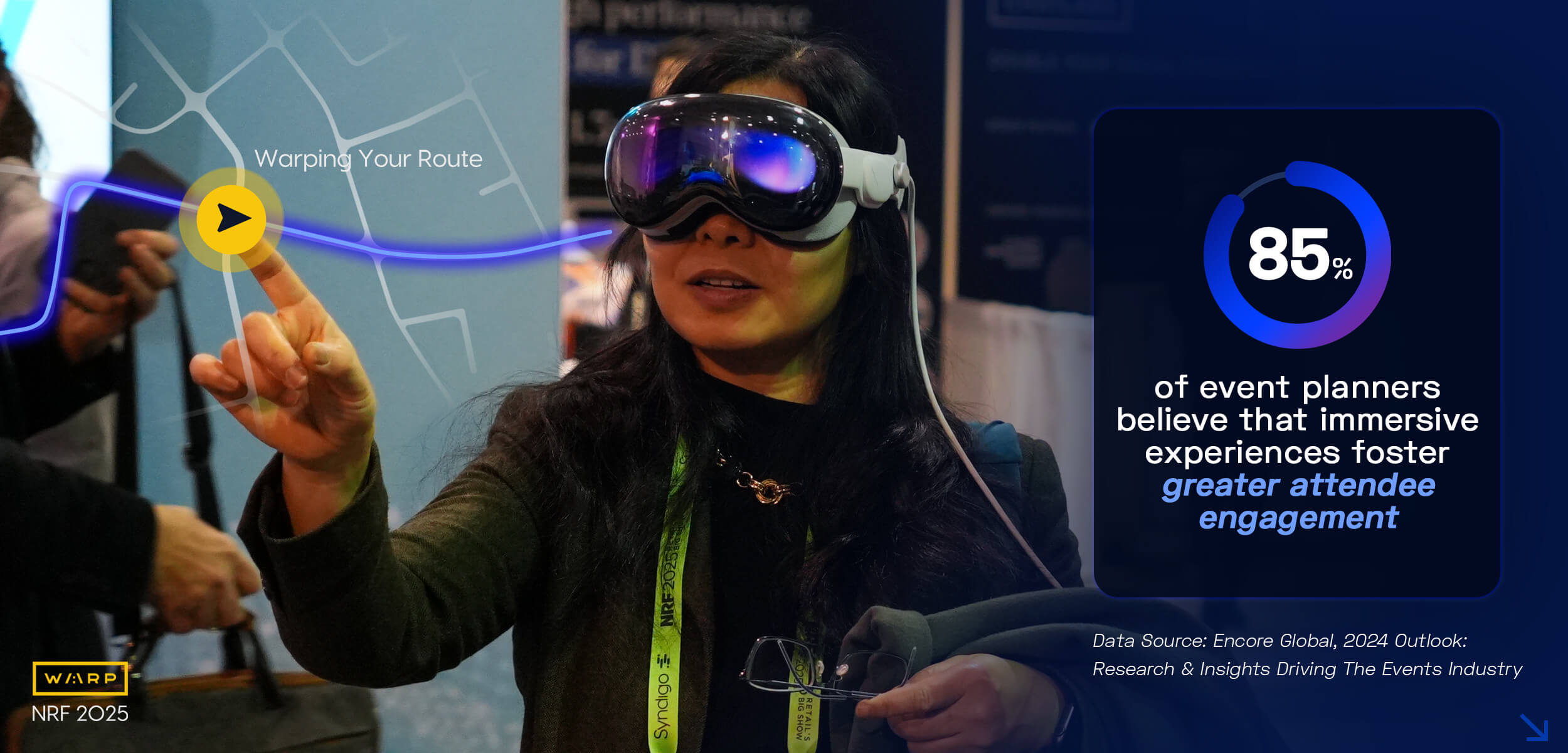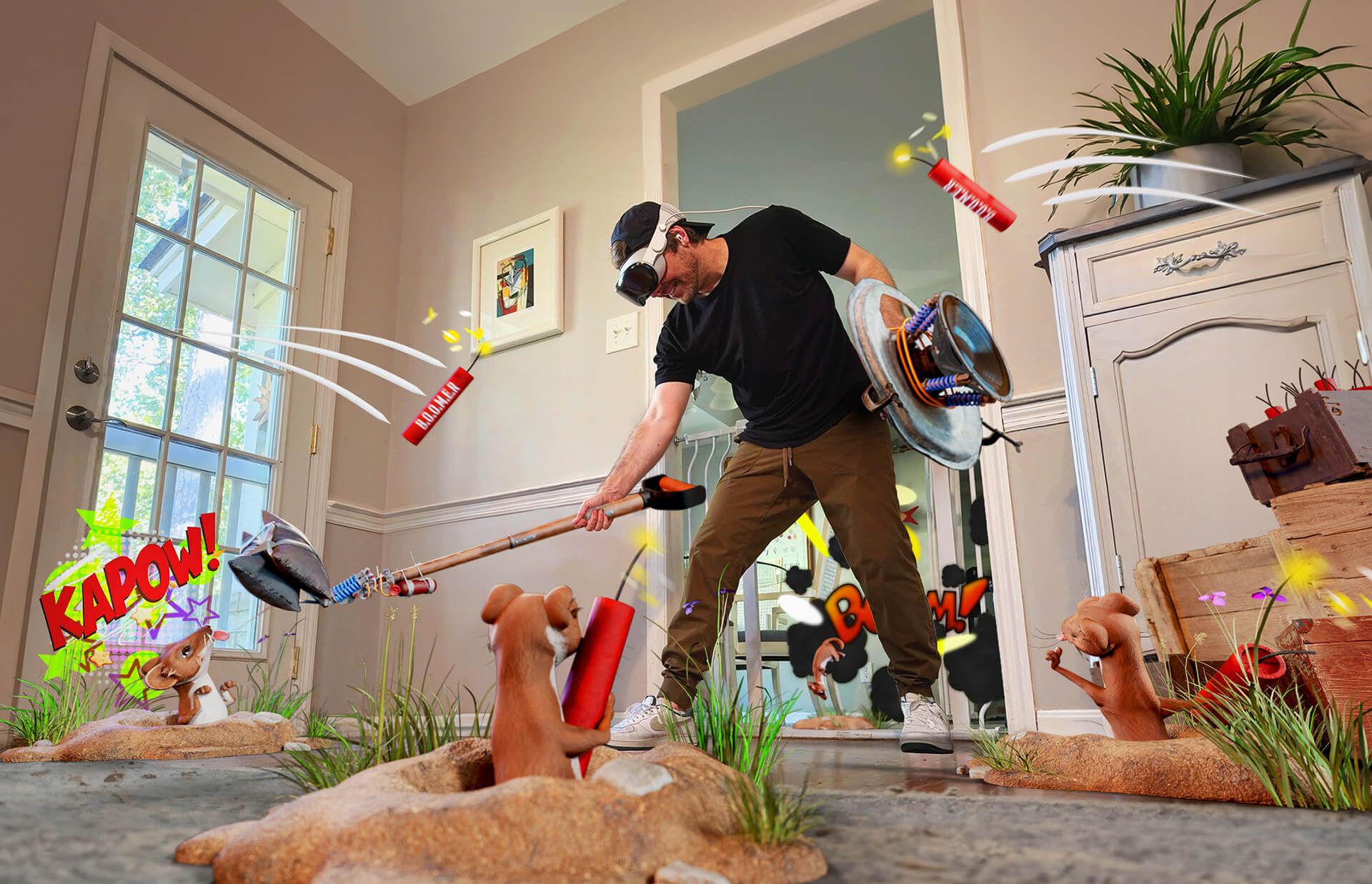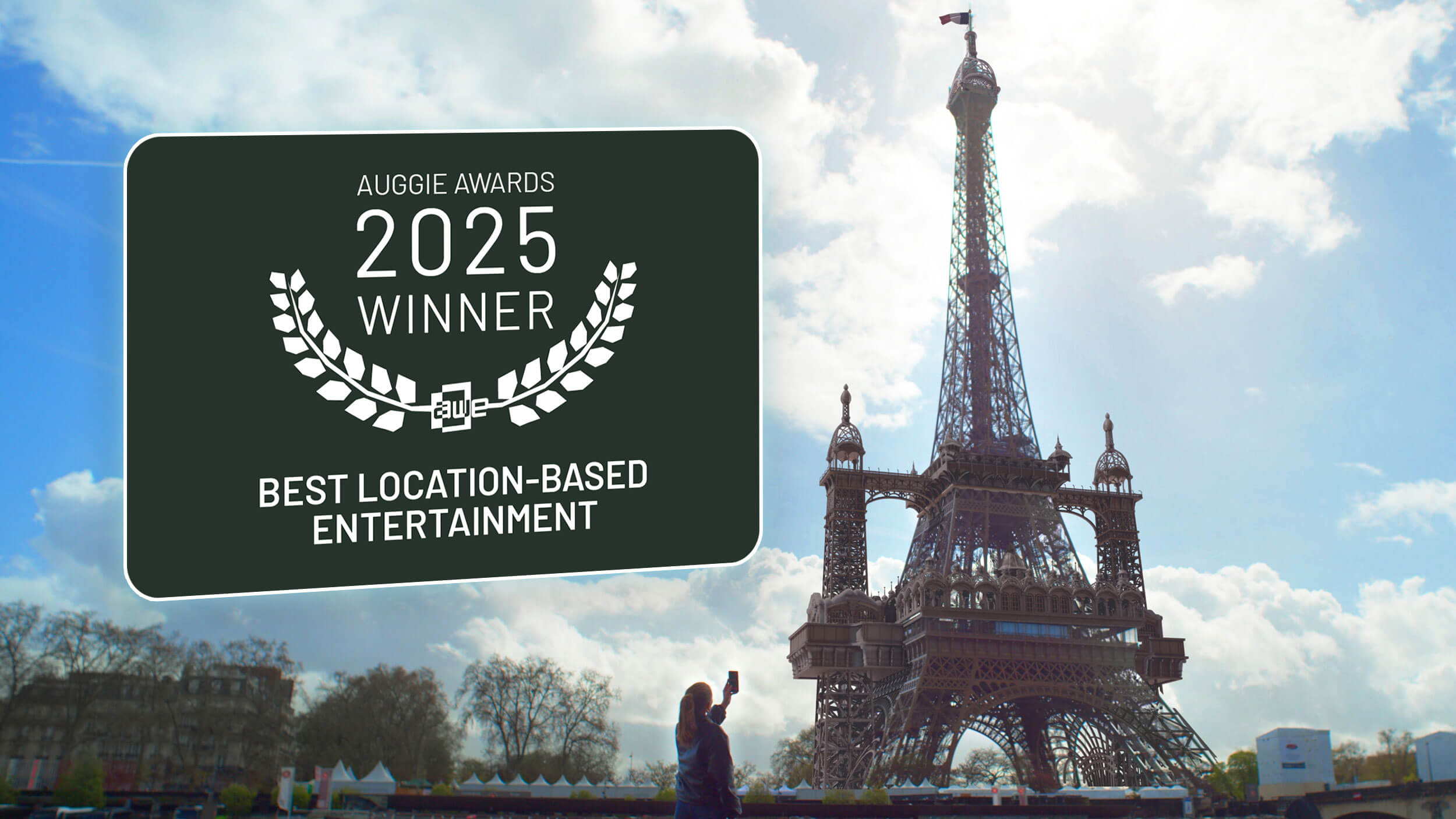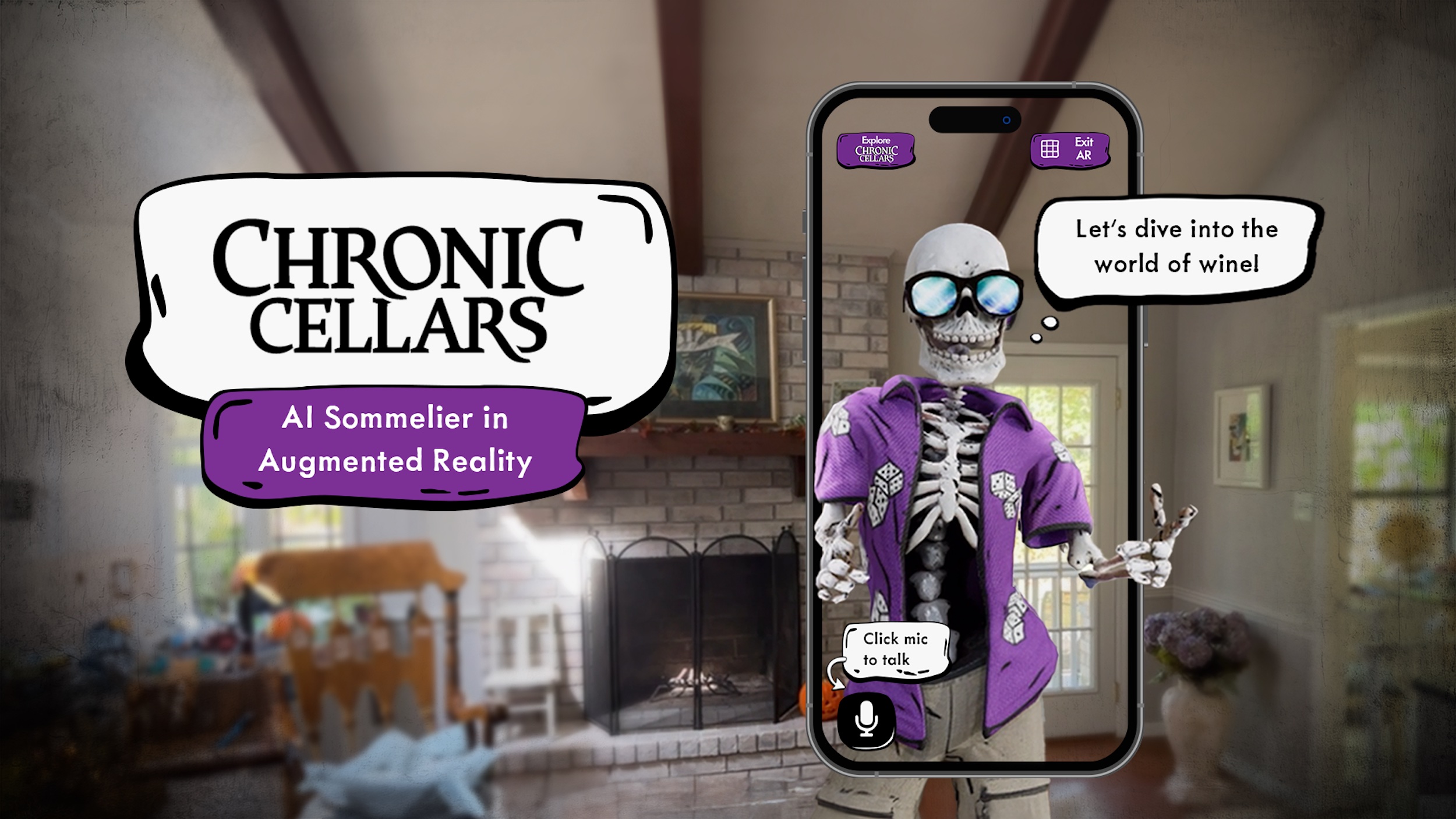At AWE USA 2025, our Head of Strategy, Omead Sinai, shared how immersive tech and interactivity can transform events into trusted, high-impact brand moments.
In a world overwhelmed by AI content, Omead explained why in-person experiences are more valuable than ever. Events can’t be faked. They offer authentic engagement, physical interaction, and real connection. These are things AI simply cannot replicate.
Brands that want to build meaningful engagement need to invest in physical presence and enhance it with immersive layers that connect, surprise, and educate.
The Winning Formula: Attract, Engage, Inspire, Share
Omead outlined how brands can stand out at crowded events:
- Attract with bold, visual storytelling
- Engage the right audience with purpose
- Inspire with personalized, immersive experiences
- Create shareable moments that extend your reach

Use Cases That Work
He shared real use cases showing how you can leverage immersive tech at events, whether to solve real problems, educate your clients, or surprise and delight your audience.
1. Wayfinding with AR-Enhanced Maps
Using branded, interactive maps powered by Google Maps and Niantic, event navigation becomes easier and more engaging. These maps can also become monetizable experiences through sponsored icons and branded content.
Speaking of Google Maps, we created the first-of-its-kind AR activation directly inside the mobile map, taking users on an AR time-travel journey through Paris landmarks, both on-site and remotely. This project won Best Location-Based Entertainment at AWE 2025.
2. Interactive Product Education
At NRF, we partnered with Warp, a company specializing in AI-driven freight logistics, to bring their 2D product to life using Apple Vision Pro. The experience visualized shipping routes between start and delivery locations. With spectator screens available for non-headset users, the activation drew crowds and helped the brand educate and engage at the same time.
3. Gamification for Higher Engagement
In collaboration with Intel and Microsoft, we designed a WebAR puzzle game to drive traffic across multiple Intel booths at the Innovation Event. The game featured a digital mascot named Chuck and reward-based progression. The result? Booth traffic increased by six times.
4. Immersive VR for Brand Storytelling
For Lenovo, we designed a Formula 1 racing VR experience showcased at three Grand Prix events: Tokyo, Shanghai, and Austin. With intuitive gameplay and competitive live leaderboards, the experience showed how VR can scale across events while staying fun and accessible.
AI That’s Experiential
Omead also introduced experiential AI: tools like AI avatars and photo booths that personalize interactions without overwhelming users.
A great example is the project we did for global potato brand McCain Foods, featuring Wormy and Vera, two AI-powered characters designed to educate users about regenerative farming.
We also created an AI-powered sommelier for Chronic Cellars winery. At the wine-tasting event, the AI avatar Purple Paradise served as a virtual wine expert, engaging guests in a fun and informative way.
There is also huge potential in GenAI filters for creating fun and unique selfies that people want to share across their social media feeds and stories. A great example is our spooky Halloween GenAI filter, created as part of the WebAR experience Final Selfie.
Final Key Takeaways for Event Success
- Start with a story, not just tech
- Use spectator screens to make immersive content visible to others not directly participating
- Track engagement through usage data, not just surveys (let’s be honest, no one likes filling out surveys)
- Make it fast, fun, and shareable
In this AI-saturated world, events remain your most trusted channel. Make them count.
Let’s chat
Not sure where to start? Book a free strategy call with us to get started! No strings attached.




